
The Enchanting Mandrare River: A Wilderness Adventure in Madagascar
Discover the hidden gems of the Mandrare River in Madagascar: a perfect blend of wildlife, natural beauty, and cultural experiences for the adventurous traveler.
The Mandrare River, located in southern Madagascar, offers a unique blend of natural beauty, wildlife, and cultural experiences. This stunning river winds through a landscape of lush forests, dramatic canyons, and traditional villages, providing an intimate look at the island's rich biodiversity and heritage. Visitors to the Mandrare River can explore the region's diverse wildlife, including lemurs, chameleons, and a wide variety of bird species. The surrounding forests are home to several protected areas, where you can embark on guided tours to see these incredible creatures up close. The river itself is a haven for water activities such as canoeing and fishing, allowing tourists to immerse themselves in the serene environment. Cultural encounters are another highlight of a visit to the Mandrare River. The local Antandroy and Antanosy communities are known for their vibrant traditions and warm hospitality. Tourists can visit traditional villages, participate in local ceremonies, and learn about the customs and way of life of these unique cultures. This blend of natural wonders and cultural richness makes the Mandrare River a truly unforgettable destination in Madagascar.
Local tips in Mandrare River
- Bring lightweight, long-sleeved clothing to protect against sun and insects.
- Hire a local guide to enhance wildlife spotting and cultural experiences.
- Visit during the dry season (April to October) for the best weather conditions.
- Carry cash, as ATMs and card payment options are limited in remote areas.
- Respect local customs and traditions, especially when visiting villages.
The Enchanting Mandrare River: A Wilderness Adventure in Madagascar
The Mandrare River, located in southern Madagascar, offers a unique blend of natural beauty, wildlife, and cultural experiences. This stunning river winds through a landscape of lush forests, dramatic canyons, and traditional villages, providing an intimate look at the island's rich biodiversity and heritage. Visitors to the Mandrare River can explore the region's diverse wildlife, including lemurs, chameleons, and a wide variety of bird species. The surrounding forests are home to several protected areas, where you can embark on guided tours to see these incredible creatures up close. The river itself is a haven for water activities such as canoeing and fishing, allowing tourists to immerse themselves in the serene environment. Cultural encounters are another highlight of a visit to the Mandrare River. The local Antandroy and Antanosy communities are known for their vibrant traditions and warm hospitality. Tourists can visit traditional villages, participate in local ceremonies, and learn about the customs and way of life of these unique cultures. This blend of natural wonders and cultural richness makes the Mandrare River a truly unforgettable destination in Madagascar.
When is the best time to go to Mandrare River?
Iconic landmarks you can’t miss
Mandrare River Camp
Discover the breathtaking beauty and rich wildlife of Madagascar at Mandrare River Camp, your eco-friendly escape along the enchanting Mandrare River.

Mandraka Falls
Experience the breathtaking beauty of Mandraka Falls, a stunning natural wonder in Madagascar, perfect for nature lovers and adventure seekers alike.
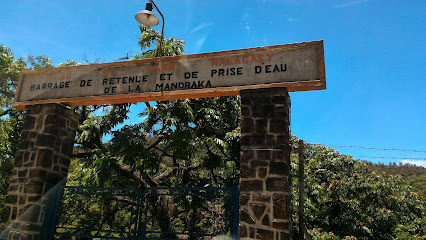
Madagascar Classic Collection
Discover Madagascar's unique beauty with personalized tours from Madagascar Classic Collection, your expert guide to adventure and culture.
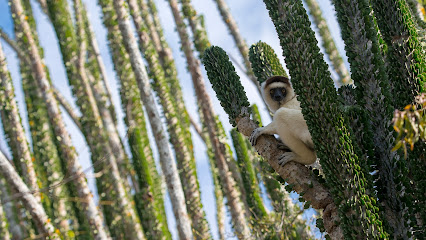
Mandrare
Explore the tranquil waters and vibrant culture of Mandrare, a hidden gem in Madagascar offering breathtaking landscapes and unforgettable experiences.

Unmissable attractions to see
Isalo National Park
Experience the breathtaking landscapes and unique biodiversity of Isalo National Park, Madagascar's natural wonderland.
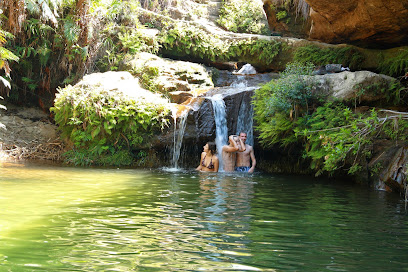
Queen's Palace
Experience the rich history and stunning architecture of Queen's Palace, a heritage museum highlighting Madagascar's royal past.
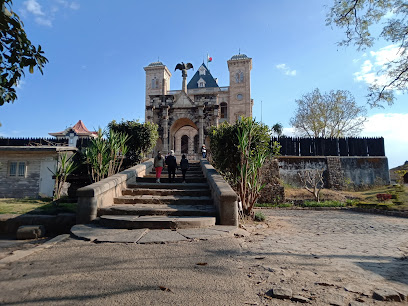
Lemurs Park
Discover Madagascar's unique wildlife at Lemurs Park, a sanctuary dedicated to the island's enchanting lemurs and rich biodiversity.

Ranomafana National Park
Discover the breathtaking biodiversity and stunning landscapes of Ranomafana National Park, a UNESCO World Heritage Site in Madagascar, perfect for nature enthusiasts and adventurers.
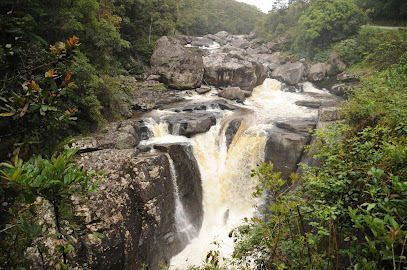
Lemuria Land
Explore Lemuria Land, a captivating animal park in Hell-Ville, Madagascar, where you can encounter beautiful lemurs in their natural habitat.
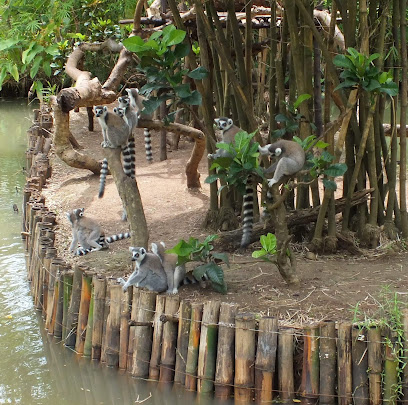
Anja Community Reserve
Explore Anja Community Reserve, a stunning Madagascar attraction boasting diverse wildlife, breathtaking landscapes, and rich cultural experiences.
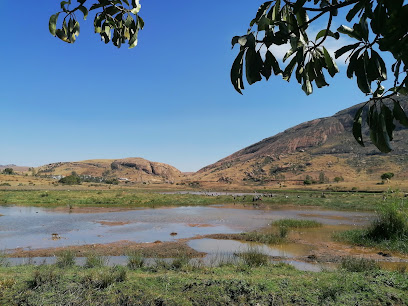
Andasibe-Mantadia National Park
Discover the enchanting landscapes and unique wildlife of Andasibe-Mantadia National Park, a must-visit destination for nature lovers in Madagascar.
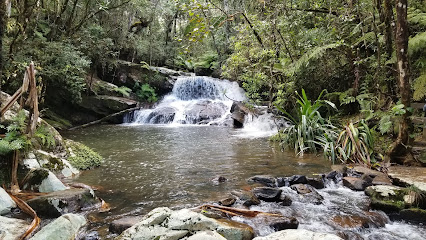
Analakely Market
Discover the vibrant Analakely Market in Antananarivo, a bustling hub of local culture, crafts, and culinary delights in Madagascar.
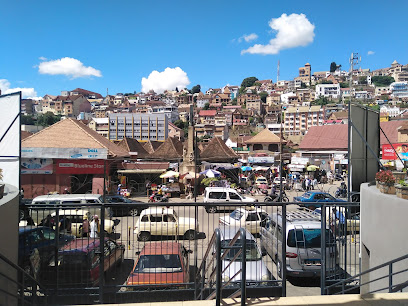
Tsingy De Bemaraha National Park
Explore the unique limestone formations and rich biodiversity of Tsingy De Bemaraha National Park, Madagascar's breathtaking natural wonder.
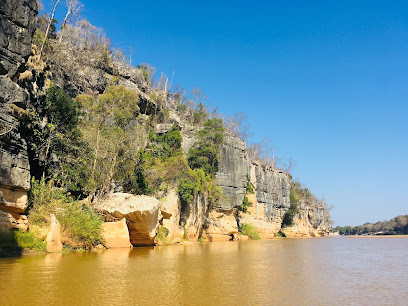
Réserve Peyrieras Madagascar Exotic
Explore the vibrant wildlife and lush landscapes of Réserve Peyrieras Madagascar Exotic, a premier park and zoo in Marozevo, Madagascar.
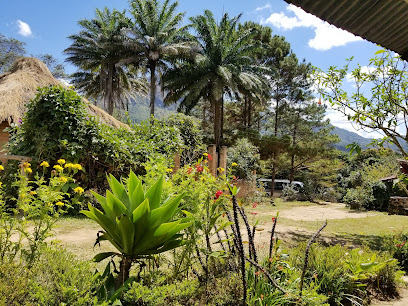
Rovan' Ambohimanga
Explore Rovan' Ambohimanga, a UNESCO World Heritage site in Madagascar, rich in history and breathtaking views of the Merina Kingdom.
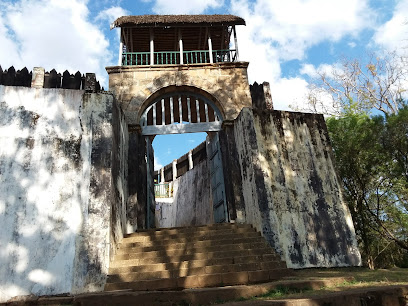
Avenue of the Baobabs
Discover the awe-inspiring Avenue of the Baobabs, a natural monument showcasing towering trees and Madagascar's unique biodiversity.
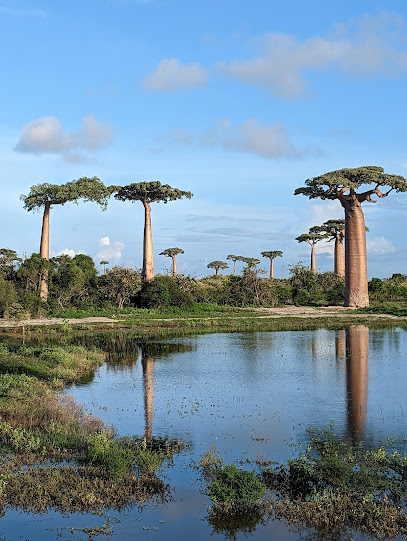
Tsingy Rouge
Explore Tsingy Rouge, Madagascar's stunning natural wonder with vibrant rock formations and breathtaking landscapes.
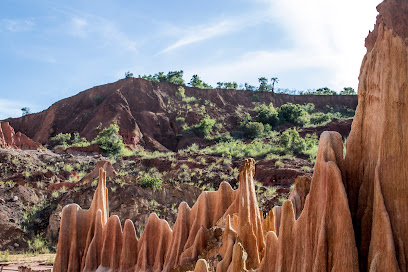
Reserva natural de Tsingy de Bemaraha
Explore the breathtaking Tsingy de Bemaraha, a UNESCO World Heritage site in Madagascar, featuring stunning limestone formations and diverse wildlife.
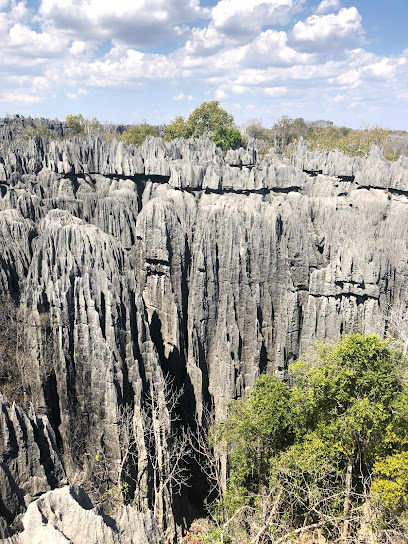
Tsarasaotra Park
Explore Tsarasaotra Park, a serene urban oasis in Antananarivo, Madagascar, perfect for nature lovers and birdwatching enthusiasts.
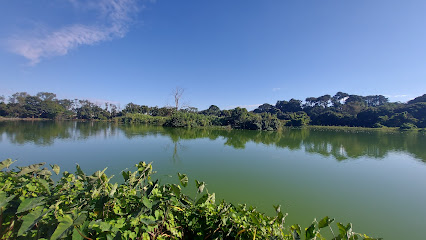
Essential places to dine
Sakamanga Hôtel
Experience comfort and culture at Sakamanga Hôtel in Antananarivo - your perfect retreat in Madagascar.
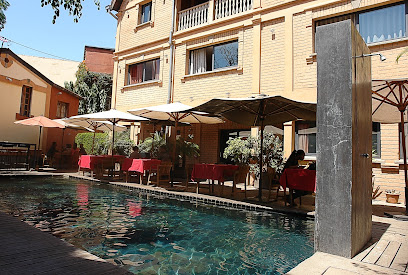
Le Carnivore - Restaurant Bar Lounge
Experience the vibrant flavors and welcoming atmosphere at Le Carnivore in Antananarivo, where every meal tells a story.
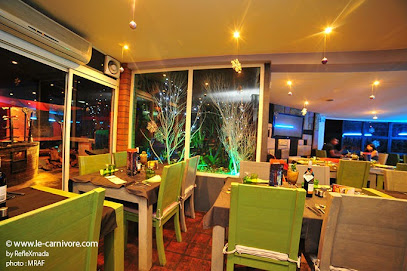
La Plantation
Discover Madagascar's unique culinary heritage at La Plantation - an unforgettable dining experience in Antananarivo.
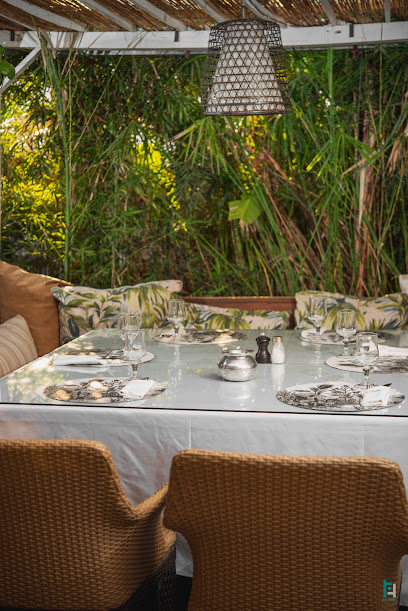
Le Rossini
Experience the authentic taste of Italy at Le Rossini in Antananarivo—where delicious cuisine meets warm hospitality.
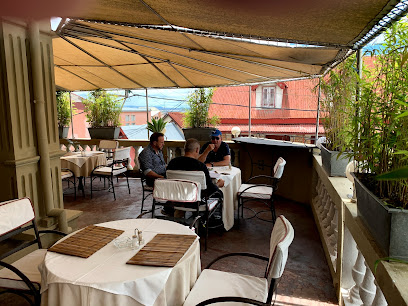
Café du Musée
Discover the authentic flavors of Madagascar at Café du Musée in Antananarivo - where every bite tells a story.
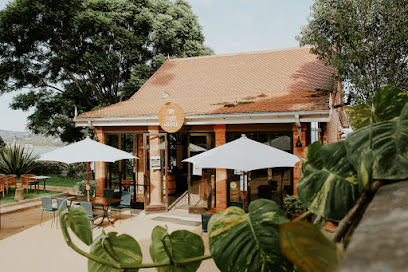
L'Oriental Ivandry
Experience authentic Lebanese cuisine at L'Oriental Ivandry in Antananarivo - where Mediterranean flavors meet warm hospitality.
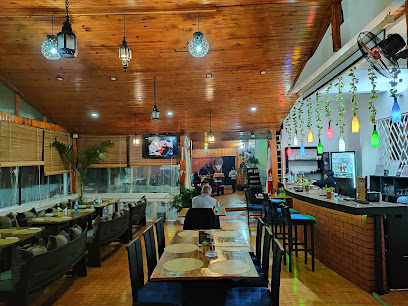
Marais Restaurant Madagascar
Experience exquisite Haute French cuisine at Marais Restaurant Madagascar in Antananarivo - where elegance meets flavor.
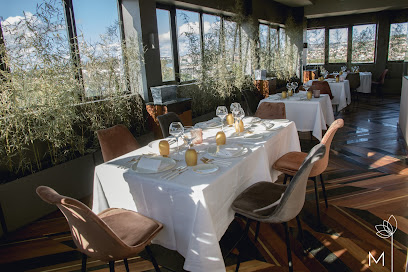
Sakamanga Restaurant
Discover exquisite European cuisine in Antananarivo at Sakamanga Restaurant – where every dish is crafted with passion and tradition.
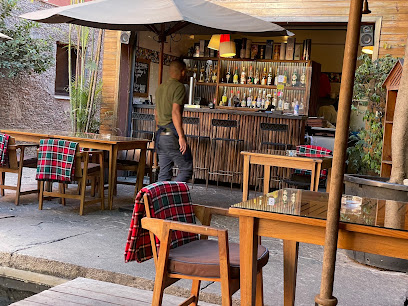
Pily Pily Restaurant - VOI Andilana Beach Resort
Experience exquisite dining at Pily Pily Restaurant in VOI Andilana Beach Resort, where stunning ocean views meet delectable cuisine.
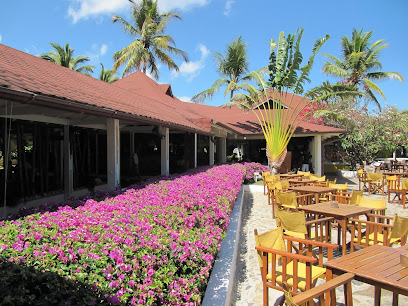
Fleuve Rouge (Red River)
Discover authentic Vietnamese cuisine at Fleuve Rouge in Antananarivo - where every dish tells a story.
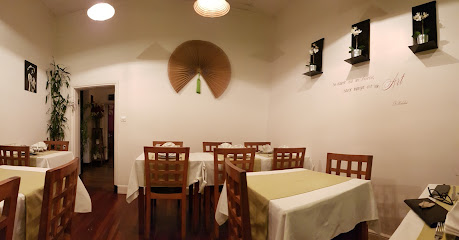
Restaurant Mirana
Experience authentic Malagasy cuisine at Restaurant Mirana in Taolagnaro - where flavor meets tradition in a warm and inviting setting.
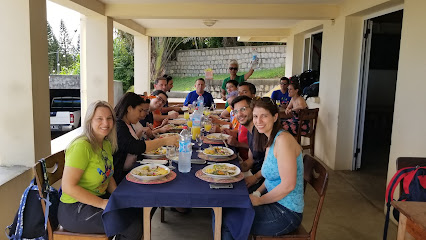
La Verdure Hotel Restaurant Madagascar
Experience exquisite Malagasy cuisine at La Verdure Hotel Restaurant in Antananarivo - where every meal is a celebration of local flavors.
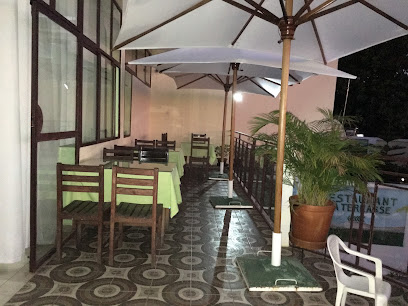
Chez Vivie
Discover authentic Malagasy cuisine at Chez Vivie in Taolagnaro – where every dish tells a story.
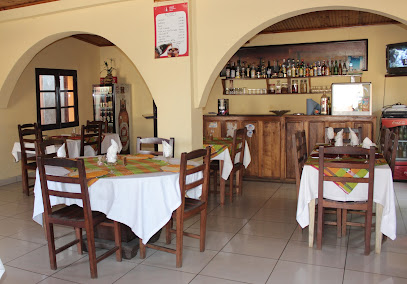
La Guinguette
Experience authentic Malagasy flavors at La Guinguette in Manakara - where every dish tells a story.
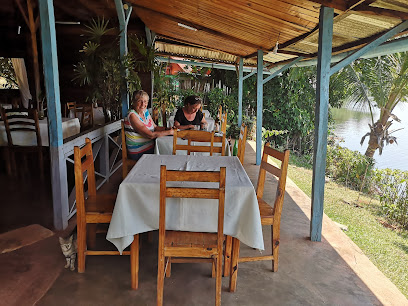
L’Arrivage Ft Dauphin
Experience exquisite seafood dining at L’Arrivage Ft Dauphin in Taolagnaro – where local flavors meet coastal charm.
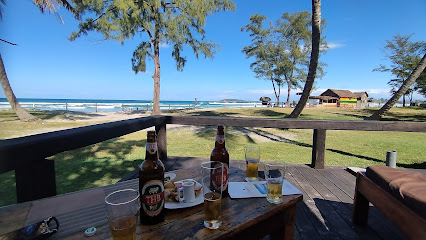
Markets, malls and hidden boutiques
Lisy Art Gallery
Discover the vibrant art scene of Madagascar at Lisy Art Gallery in Antananarivo, where local talent and cultural heritage come together.
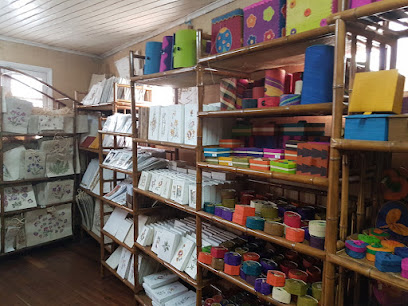
Akoor Digue
Experience the heart of Antananarivo at Akoor Digue, a shopping paradise blending local charm with international flair.
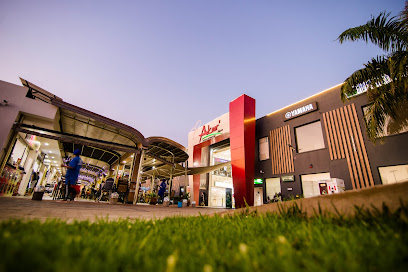
Kudéta Shop
Explore Kudéta Shop in Antananarivo for authentic Malagasy souvenirs, from handcrafted art to unique gifts, showcasing Madagascar's rich cultural heritage.
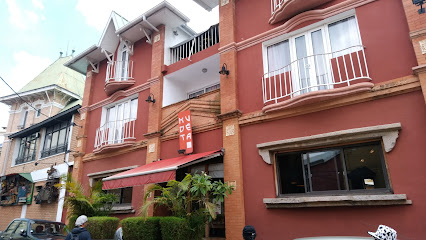
Digue Market
Experience the vibrant culture of Madagascar at Digue Market, a must-visit shopping destination in Antananarivo.
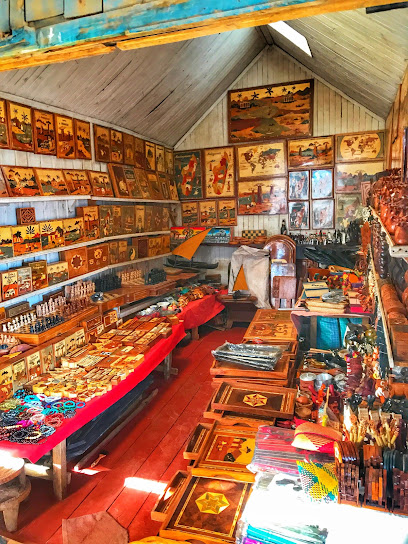
Sucre Sale
Unwind at Sucre Sale, Taolagnaro's beloved coffee shop, where every cup of coffee tells a story and every visit feels like home.
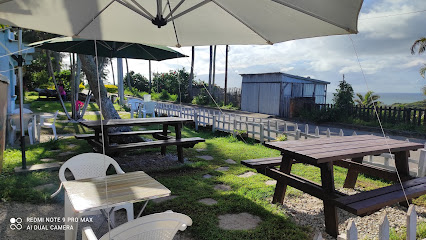
Akany Concept Store
Discover the essence of Madagascar at Akany Concept Store, where local crafts and creativity come together in Antananarivo.
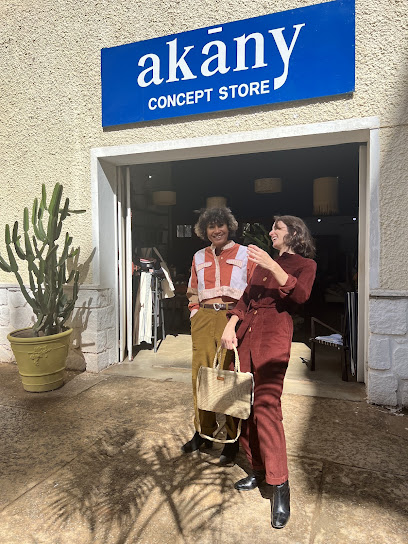
Mandrare River Camp
Discover the serene beauty and rich wildlife of Madagascar at Mandrare River Camp, your gateway to adventure and relaxation.

Boutique Mamy
Explore Boutique Mamy in Ambovombe for unique clothing that reflects local culture and craftsmanship, perfect for fashion-forward travelers.

Prix Unique
Discover a diverse range of local products and essentials at Prix Unique, the go-to supermarket in Taolagnaro for tourists and locals alike.

Fyara boutique de Souvenir
Discover the essence of Madagascar at Fyara Boutique de Souvenir, where every handcrafted item tells a story.
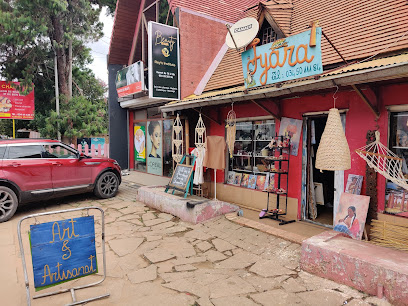
MASTER SHOP
Discover local flavors and souvenirs at MASTER SHOP, a vibrant supermarket in Amboasary Sud that captures the essence of Malagasy culture.
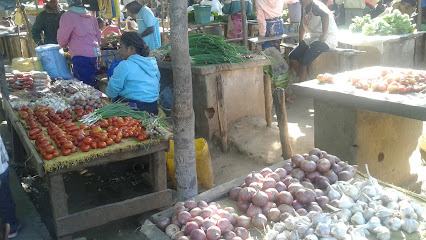
Madagascar Classic Collection
Explore Madagascar's breathtaking landscapes and unique wildlife with expertly curated tours from Madagascar Classic Collection.
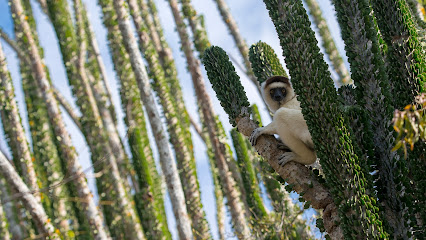
Fakhri-Store
Explore local flavors and essentials at Fakhri-Store, the vibrant supermarket in Taolagnaro offering a taste of Madagascar.

Second hand shop
Unearth unique treasures and local culture at Taolagnaro's charming second-hand shop, a must-visit for every traveler seeking authentic souvenirs.

Magasin Tsiry
Experience the vibrant culture and unique shopping offerings at Magasin Tsiry in Taolagnaro, Madagascar's local shopping haven.
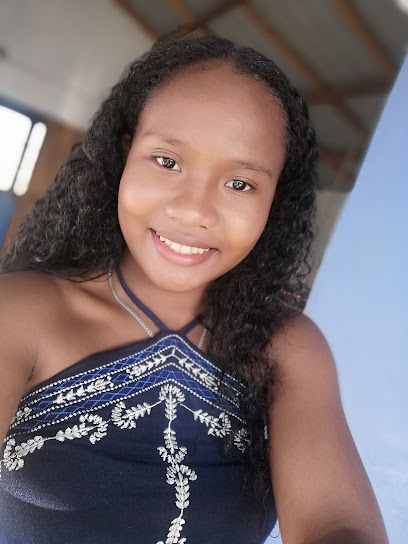
Essential bars & hidden hideouts
Le Carnivore - Restaurant Bar Lounge
Experience the vibrant flavors of Madagascar at Le Carnivore, Antananarivo's premier dining and lounge destination for tourists and locals alike.

No Comment BAR
Experience the vibrant nightlife of Antananarivo at No Comment BAR, where delicious tapas and refreshing drinks await in a lively atmosphere.
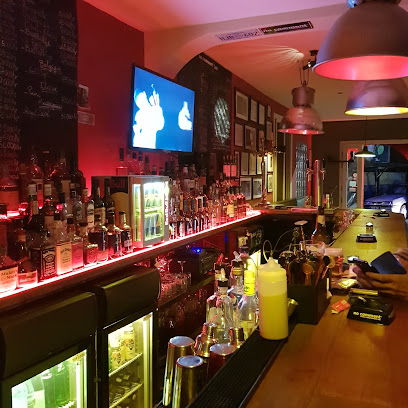
Le Point d'Exclamation Lounge Bar
Discover Antananarivo's nightlife at Le Point d'Exclamation Lounge Bar, where cocktails, pizza, and vibrant energy await!
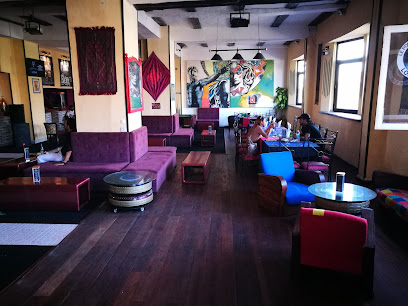
Old 7 bar
Discover the vibrant nightlife at Old 7 Bar, where expertly crafted cocktails and a lively atmosphere await in the heart of Antananarivo.
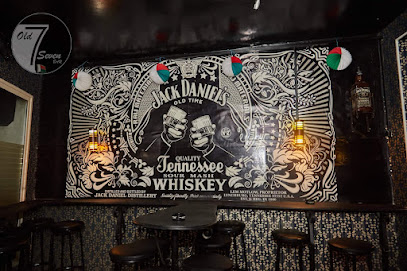
Cafe Bar Colorado
Experience the vibrant atmosphere of Cafe Bar Colorado in Taolagnaro, where delicious cocktails meet sports excitement in a welcoming ambiance.
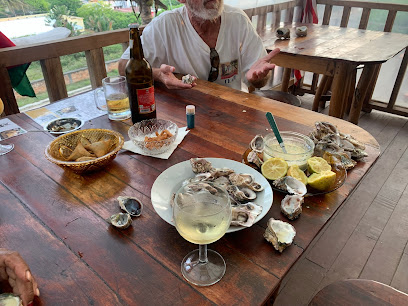
Manson by Marco
Discover the vibrant nightlife at Manson by Marco, a local pub in Antananarivo offering a delightful selection of drinks and a warm atmosphere.
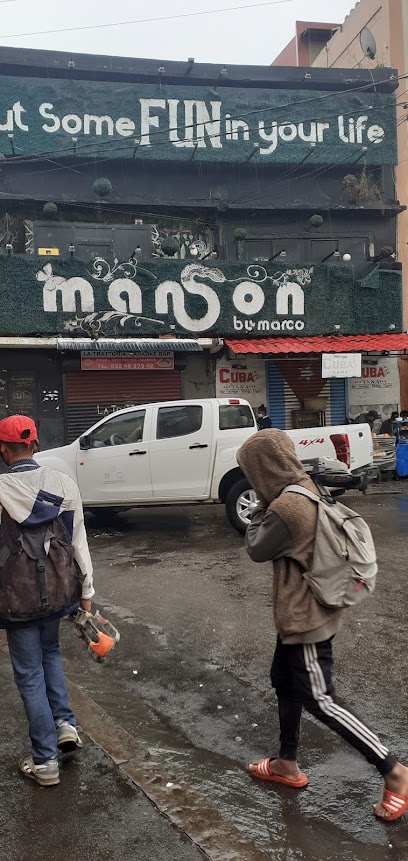
Mandraka Park Ampasimpotsy
Experience the serene beauty of Mandraka Park Ampasimpotsy, where nature meets relaxation in the heart of Madagascar.
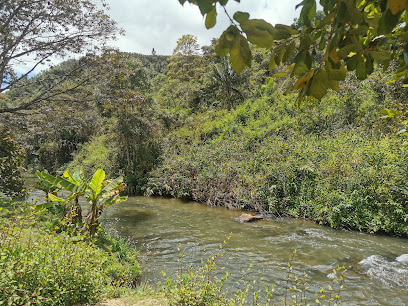
Mandrare River Camp
Discover the tranquil beauty of Madagascar at Mandrare River Camp, where adventure meets relaxation along the serene Mandrare River.

Surf's Up Bar, Fort-dauphin
Experience the vibrant nightlife at Surf's Up Bar in Fort-Dauphin, the perfect karaoke destination for fun and entertainment in Madagascar.
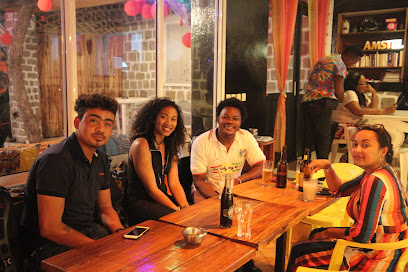
Bord De Mandritsara
Experience the thrill of darts and the vibrant culture of Ambalabe at Bord De Mandritsara, the ultimate dart bar destination.
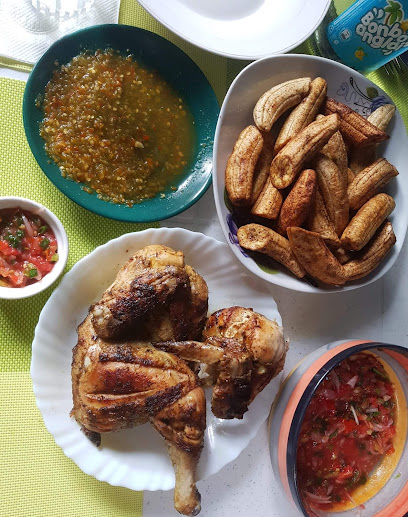
Mandrare
Experience the serene beauty of Mandrare, a hidden water paradise in Madagascar perfect for relaxation and adventure amid nature's wonders.

Aminah
Experience the vibrant nightlife and local flavors at Aminah, Taolagnaro’s premier bar, perfect for unwinding after a day of exploration.

Bar Manga
Experience the vibrant atmosphere of Bar Manga in Ivato, Antananarivo, where local culture meets refreshing drinks in a cozy setting.
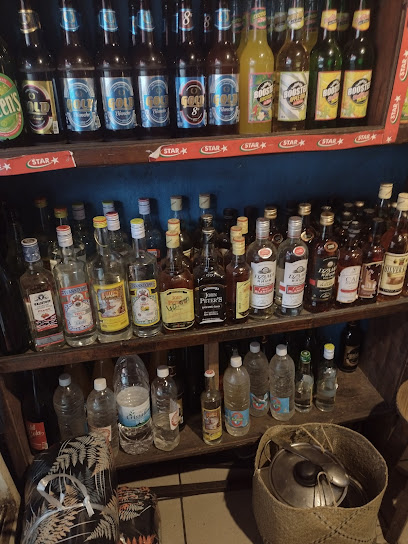
Mamoeramanjaka
Discover Mamoeramanjaka, a vibrant bar in Morafeno, Madagascar, where local culture meets a lively atmosphere for an unforgettable experience.

Local Phrases
-
- HelloSalama
[sa-la-ma] - GoodbyeVeloma
[ve-lo-ma] - YesEny
[en-y] - NoTsia
[tsi-a] - Please/You're welcomeAzafady
[a-za-fa-dy] - Thank youMisaotra
[mi-sa-ot-ra] - Excuse me/SorryAzafady
[a-za-fa-dy] - How are you?Manao ahoana ianao?
[ma-nao a-wa-na ya-nao] - Fine. And you?Tsara. Ary ianao?
[tsa-ra a-ry ya-nao] - Do you speak English?Miteny Anglisy ianao?
[mi-te-ny an-gli-sy ya-nao] - I don't understandTsy mahay
[tsi ma-hai]
- HelloSalama
-
- I'd like to see the menu, pleaseTe-ham-po ny menio, azafady
[te-ham-po ny me-ni-o a-za-fa-dy] - I don't eat meatTsy mihinam-bary aho
[tsi mi-hi-nam-ba-ri a-hu] - Cheers!Manao fanahy!
[ma-nao fa-na-hy] - I would like to pay, pleaseTe-ham-po ny fandoavana, azafady
[te-ham-po ny fan-do-va-na a-za-fa-dy]
- I'd like to see the menu, pleaseTe-ham-po ny menio, azafady
-
- Help!Fandriampahalemana!
[fan-dri-am-pa-ha-le-ma-na] - Go away!Mamono
[ma-mo-no] - Call the Police!Mangataka Polisy!
[man-ga-ta-ka po-li-sy] - Call a doctor!Mangataka dokotera!
[man-ga-ta-ka do-ko-te-ra] - I'm lostTsy hitako aho
[tsi hi-ta-ko a-hu] - I'm illMafy aho
[ma-fi a-hu]
- Help!Fandriampahalemana!
-
- I'd like to buy...Te-ham-po hanoratra...
[te-ham-po ha-no-ra-tra] - I'm just lookingMamaky vava
[ma-ma-ky va-va] - How much is it?Ohom-baiko ve izany?
[o-hom-bai-ko ve i-za-ni] - That's too expensiveMahita fatra be izany
[ma-hi-ta fa-tra be i-za-ni] - Can you lower the price?Azonao atao an-tserasera ve izany?
[a-zo-nao a-tau an-tse-ra-se-ra ve i-za-ni]
- I'd like to buy...Te-ham-po hanoratra...
-
- What time is it?Inona no ora?
[i-no-na no o-ra] - It's one o'clockEnina ora
[e-ni-na o-ra] - Half past (10)Efapolo sy sasany
[e-fa-po-lo si sa-sa-ni] - MorningMaraina
[ma-rai-na] - AfternoonHariva
[ha-ri-va] - EveningAlina
[a-li-na] - YesterdayOmaly
[o-ma-ly] - TodayAnio
[a-ni-o] - TomorrowAndroany
[an-droa-ny] - 1Iray
[i-ray] - 2Roa
[ro-a] - 3Telo
[te-lo] - 4Efatra
[e-fa-tra] - 5Dimy
[di-my] - 6Enina
[e-ni-na] - 7Fitsambolana
[fi-tsam-bo-la-na] - 8Valo
[va-lo] - 9Sivy
[si-vy] - 10Folo
[fo-lo]
- What time is it?Inona no ora?
-
- Where's a/the...?Aiza ny...
[ai-za ny] - What's the address?Inona ny adiresy?
[i-no-na ny a-di-re-sy] - Can you show me (on the map)?Azonao atao am-panam-boarana aho (amin'ny sarita)?
[a-zo-nao a-tau am-pa-na-bo-a-ra-na a-hu a-min-ny sa-ri-ta] - When's the next (bus)?Aiza ny fiara manaraka?
[ai-za ny fia-ra ma-na-ra-ka] - A ticket (to ....)Fichetra (ho ...)
[fi-che-tra ho]
- Where's a/the...?Aiza ny...
History of Mandrare River
-
The Mandrare River has supported human life for centuries. Early settlements along its banks were established by indigenous tribes who utilized the river for fishing, agriculture, and transportation. Evidence of these settlements can be found in archaeological sites that reveal tools, pottery, and remnants of ancient dwellings.
-
The Antandroy people, known as the 'People of the Thorns,' have a deep historical and cultural connection to the Mandrare River. This nomadic tribe has relied on the river for sustenance, using its waters for irrigation and fishing. Their traditions, rituals, and way of life are intricately linked to the river’s seasonal cycles.
-
During the late 19th and early 20th centuries, Madagascar fell under French colonial rule. The Mandrare River region saw the introduction of new agricultural practices and infrastructure projects aimed at exploiting the river's resources. Colonial plantations and irrigation systems were established, altering the traditional ways of life for the local populations.
-
The mid-20th century saw Madagascar’s struggle for independence from French colonial rule. The Mandrare River area was a significant location for local uprisings and resistance movements. The river's strategic importance provided a natural defense and a means of mobilizing resources and people in the fight for freedom.
-
In recent decades, the Mandrare River has faced numerous environmental challenges due to deforestation, climate change, and industrial activities. Efforts have been made to balance development with conservation, ensuring that the river continues to support the diverse ecosystems and local communities that depend on it.
-
The Mandrare River is central to various cultural festivals and ceremonies held by the local communities. These events often involve music, dance, and rituals that celebrate the river’s role in sustaining life and symbolizing spiritual connections. Notable festivals include traditional fishing ceremonies and harvest celebrations.
Mandrare River Essentials
-
Mandrare River is situated in the southeastern part of Madagascar. The nearest major airport is Antananarivo Ivato International Airport (TNR), located in the capital city, Antananarivo. From there, you can take a domestic flight to Fort Dauphin (Tolagnaro), which is the closest urban center to Mandrare River. Once in Fort Dauphin, you can hire a 4x4 vehicle or arrange for a private transfer to reach the Mandrare River area. The journey from Fort Dauphin to Mandrare River typically takes around 3-4 hours by road, depending on weather and road conditions.
-
Transportation options in the Mandrare River area are limited. Most travelers use 4x4 vehicles to navigate the rough and often unpaved roads. Local guides and drivers can be hired for day trips or longer excursions. For short trips within nearby villages, walking is often the most practical option. There is limited public transport, so it is advisable to arrange your transportation in advance, either through your accommodation or a local travel agency.
-
The official currency in Madagascar is the Malagasy Ariary (MGA). Credit cards are accepted in some hotels and larger establishments in Fort Dauphin, but it is advisable to carry cash, especially when traveling to rural areas like Mandrare River. ATMs are available in Fort Dauphin, but not in the remote areas around Mandrare River, so ensure you have enough cash before heading out. It is also a good idea to carry smaller denominations for easier transactions.
-
While the Mandrare River area is generally safe for tourists, it is important to take standard precautions. Avoid displaying valuables and keep your belongings secure. Be cautious when traveling at night, and try to stick to well-lit and populated areas. While there are no specific high-crime areas targeting tourists, it is always best to stay vigilant and aware of your surroundings. Hiring a local guide can add a layer of safety and enhance your experience.
-
In case of emergency, dial 117 for police assistance and 124 for medical emergencies. Medical facilities in remote areas are limited, so it is advisable to have comprehensive travel insurance that includes medical evacuation. There are small clinics in nearby villages, but for serious medical issues, you may need to travel to Fort Dauphin or even Antananarivo. It is also wise to carry a basic first aid kit and any necessary medications with you.
-
Fashion: Do dress modestly, especially when visiting villages and local communities. Avoid wearing revealing or flashy clothing. Religion: Do respect local customs and traditions. Always ask for permission before taking photos of people or religious sites. Public Transport: Do be respectful and patient, as transport can be infrequent and crowded. Greetings: Do greet people with a friendly 'Salama' (hello) and a smile. A handshake is also common. Eating & Drinking: Do try local dishes and be open to new culinary experiences. Don't refuse food or drink offered by locals, as it is considered impolite.
-
To experience Mandrare River like a local, consider hiring a local guide who can provide insights into the region's culture and history. Visit local markets to buy fresh produce and traditional Malagasy goods. Engage with the local community and learn about their way of life. Be sure to explore the natural beauty of the area, including the unique flora and fauna. Don't miss out on a guided walk through the spiny forests, where you can observe lemurs and other wildlife in their natural habitat.
Nearby Cities to Mandrare River
-
Things To Do in Fort Dauphin
-
Things To Do in Manakara
-
Things To Do in Toliara
-
Things To Do in Ifaty
-
Things To Do in Fianarantsoa
-
Things To Do in Antsirabe
-
Things To Do in Antananarivo
-
Things To Do in Andasibe
-
Things To Do in Toamasina
-
Things To Do in Mahajanga
-
Things To Do in Majunga
-
Things To Do in Inhambane
-
Things To Do in Maxixe
-
Things To Do in Vilanculos
-
Things To Do in Le Morne






